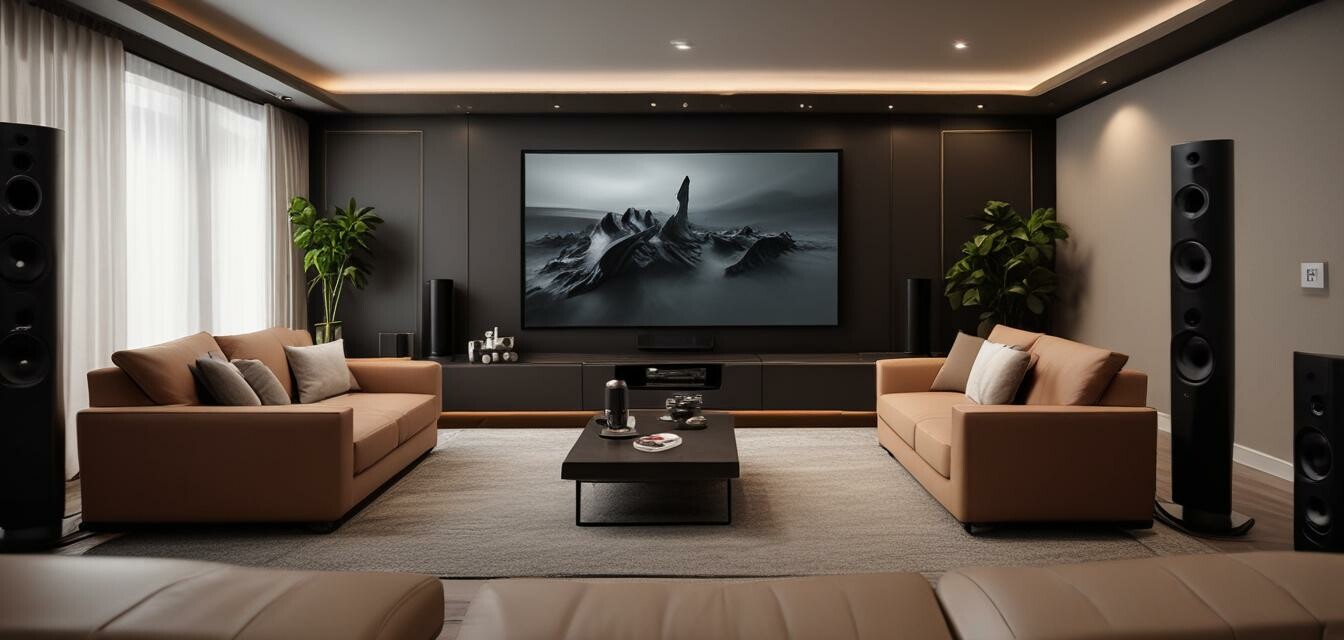
How to Enhance Your Audio Experience with Surround Sound
Key Takeaways
- Understanding the different types of surround sound systems.
- Choosing the right equipment for your space.
- Setup tips for achieving optimal sound quality.
- Importance of room acoustics and speaker placement.
- Maintenance tips to keep your system performing well.
Creating an immersive audio experience at home is made possible by setting up a surround sound system. Whether you love watching movies or listening to music, surround sound can elevate the experience to a whole new level. In this guide, we will explore how to enhance your audio experience by installing and optimizing a surround sound system.
Understanding Surround Sound
Surround sound systems provide a multi-dimensional audio experience that traditional stereo systems cannot match. They work by using multiple speakers arranged strategically around the listener. Here are the common surround sound formats:
| Format | Description |
|---|---|
| 5.1 Surround Sound | An advanced format with 5 speakers and 1 subwoofer providing a basic surround sound setup. |
| 7.1 Surround Sound | Includes 7 speakers and 1 subwoofer, allowing for an even more immersive experience. |
| 9.1/11.1 Surround Sound | These formats add additional speakers for even greater sound depth and dimension. |
Choosing the Right Equipment
Before you begin setting up your surround sound system, it's crucial to choose the right components. Here's what you'll need:
- Receiver: Central hub that connects and powers your speakers.
- Speakers: Choose a combination of surround sound speakers, including floor standing, bookshelf, and satellite options.
- Subwoofer: Essential for deep bass, enhancing overall sound quality.
- Cables: High-quality speaker cables and HDMI cables are necessary for connecting your components.
For more insights on choosing electronics, visit our Buying Guides section.
Setting Up Your Surround Sound System
Follow these steps to set up your surround sound system effectively:
- Room Selection: Choose a room with minimal clutter to reduce sound interference.
- Speaker Placement: Position speakers according to the recommended setup. Here’s a basic guide:
| Speaker Type | Placement Tips |
|---|---|
| Front Speakers | Place at ear level, about 30 degrees to the left and right of the center. |
| Center Speaker | Position directly above or below your TV for the best dialogue clarity. |
| Surround Speakers | Place slightly above ear level and to the sides of the listening position. |
| Subwoofer | Position in a corner or against a wall for optimal bass response. |
- Connect the Components: Use the appropriate cables to connect your speakers to the receiver.
- Calibration: Many modern receivers have an automatic calibration feature. Use this to optimize sound quality based on your room's acoustics.
Room Acoustics and Optimization
The acoustics of your room can significantly impact sound quality. Here are tips to enhance your room's acoustics:
- Add rugs and carpets to minimize sound reflections.
- Use curtains to reduce ambient noise.
- Consider acoustic panels to further refine sound quality.
Maintenance Tips
To ensure your surround sound system continues to perform at its best, consider these maintenance tips:
- Check cables regularly for wear and tear.
- Dust speakers and components to prevent any audio distortion.
- Keep firmware updated for your receiver and related devices.
Conclusion
Enhancing your audio experience with a surround sound system is an excellent investment for movie buffs and music lovers alike. With the right equipment, proper setup, and room optimization, you can create a truly immersive audio environment. Remember, for more tips on optimizing your electronic gadgets, explore our How-to Guides section and keep your tech at its best!
Pros
- Immersive audio experience that enhances entertainment.
- Versatile setups for different room sizes.
- Advanced options available for enthusiasts.
Cons
- Initial setup can be complicated.
- Requires investment in quality equipment.
- Room acoustics may necessitate additional adjustments.
